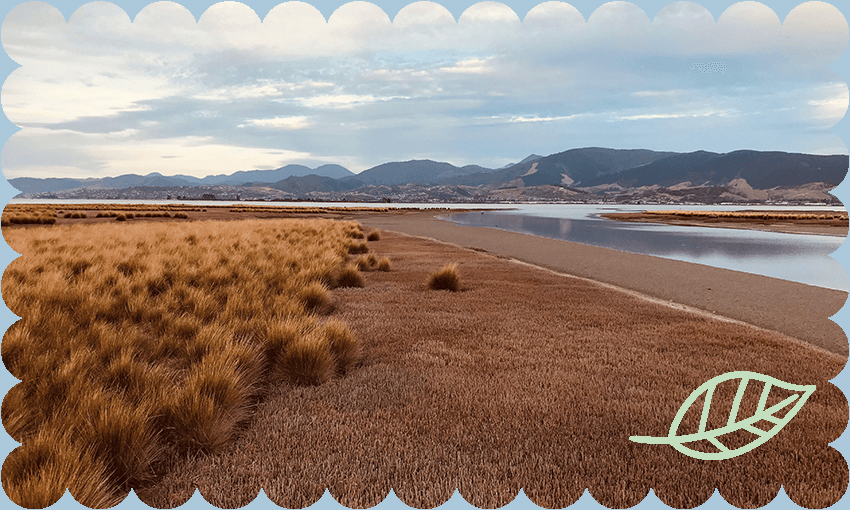For many companies, forest carbon offsets have become a way to compensate the environment for the use of its resources. Jihee Junn looks at how the establishment of wetlands, known as blue carbon offsetting, could be an even greener option.
They might not seem like much judging from their swampy exterior, but there’s a lot more to wetlands than meets the eye. Home to a kaleidoscope of plant, marine, and native bird species, wetlands form a vital link between land and water, acting like “kidneys”, or giant sponges, purifying and slowing the flow of water off the land, and controlling flood water and pollutants. Wetlands also have strong cultural and spiritual importance for Māori as sacred sources for kai such as eel and whitebait, and weaving material like harakeke.
Prior to human settlement from around 1250 AD, wetlands took up a sizeable portion of the natural landscape. In Auckland, for example, the city’s low-lying western suburbs were once full of cabbage trees and flax, forming habitats for birds like weka and pūkeko, while in Wellington’s Hutt Valley, marshlands and swamp forest dominated by raupō and toetoe once extended several kilometres up the valley from the river mouth.
Today, however, just 10% of Aotearoa’s original wetlands are thought to remain. In the past, these soggy areas of land were often regarded as little more than a geographic nuisance – mosquito-filled swamps and bogs to drain for farmland or urban development, or simply somewhere to dump rubbish. Their ecological importance was only fully understood later on, but since then, efforts have been made to protect and restore these vital ecosystems, not just for biodiversity reasons, but as mitigators against the effects of climate change as well.
Across Aotearoa, a number of coastal areas are currently being scoped out as part of a “blue carbon” pilot programme led by The Nature Conservancy (TNC) and part funded by Z Energy (Z). Blue carbon refers to the carbon stored in coastal and marine ecosystems such as mangroves, tidal marshes and seagrasses. International research has shown these ecosystems can store two to four times more carbon than land-based forestry systems, and is estimated to boast a rate of carbon sequestration up to 100 times faster.
As a relatively new concept, there’s little data around just how effective these ecosystems are in sequestering carbon in a New Zealand context – which is where TNC comes in. Founded in the US in 1951 through grassroots action, TNC is a global environmental nonprofit working in more than 70 countries and territories both directly and indirectly through its partners. In 2017, TNC launched in Aotearoa and has since undertaken a number of projects, most notably in the Hauraki Gulf where it has helped support currently under-resourced efforts to replenish mussel beds and reefs which help to filter pollution in the water. TNC also supports the Kotahitanga mō te Taiao Alliance which seeks to restore 3.5 million hectares of land, freshwater and ocean at the top of the South Island.
Currently, TNC is in the process of identifying a handful of potential blue carbon pilot sites in areas such as the Top of the South, Bay of Plenty, Wairarapa, and Waikato regions, as well as the Kaipara Harbour. The aim is to have as wide a range of geographies as possible to account for variabilities from place to place, with the pilot likely to use six to 10 final environments. Work at the sites will involve sampling to assess carbon storage, restoration and the creation and sale of blue carbon credits through a voluntary carbon market.
“The locations we’re looking at most closely are the ones which have been previously claimed from estuaries (places where saltwater and freshwater mix),” says Dr Erik van Eyndhoven, associate director of conservation at TNC Aotearoa New Zealand. “Historically, these sites would’ve been bunded off parts of estuaries – drainage works put in, flood gates installed, salt marshes or other vegetation types converted to rough grazing, for example.”
“Restoration would mean letting the saltwater flood back into those areas, which might mean earthworks, removing some bunds or floodgates, or modifying drainage structures. After that, we might try to replant some sites to help restore those areas back into native vegetation. At other sites we might choose to see what happens naturally.”
Ultimately, if the project proves successful, the hope is that these ecosystems can be utilised to generate blue carbon credits for entities to purchase in order to offset their emissions footprints, providing a financial incentive for large-scale restoration. For example, a landowner might be incentivised to restore an area used for grazing by sheep and cattle into a blue carbon site by planting saltmarsh species and flooding the area with saltwater, allowing them to earn revenue from the carbon yields while supporting biodiversity efforts at the same time.
The hope is that by demonstrating how these projects can be done, others will come on board and implement them around the country.
“There’s a lot of interest around these approaches and tools given the issues around adapting to the effects of climate change and dealing with the consequences of sea level rise because there’s this massive question around what are we going to do with this land that’s going to be underwater in the future,” says van Eyndhoven.
The opportunity to better understand the role of wetlands in the response to climate change has appealed to a wide range of groups who are connected to the land in different ways.
“Some of the councils we’re working with are really interested in the role these blue carbon projects could have in incentivising a different use for that marginal land (around fringes of estuaries) since the ability to generate revenue streams from carbon through restoration could take some of the pain out of the transition,” says van Eyndhoven. “There are also a number of landowners who are interested in understanding how they can better use their land in a way that’s more appropriate for responding to climate change, with iwi also expressing interest given the importance of these areas to them.”
With so many moving parts and players involved, however, getting these pilots underway requires significant investment. From identifying possible sites, surveying and sampling the areas, and undergoing physical restoration processes, the project is likely to run for two to three years. Z’s biodiversity fund has contributed to the financing for the pilot, crucial to getting these initial efforts off the ground.
“Biodiversity decline is such an important issue to understand and be acting on right now,” says Abbie Bull, head of sustainability and community at Z. “The main reason we’re investing in biodiversity projects is because they’re essential to providing life-supporting services such as clean water, pollination, and flood control among other things, which are all needed for adaptation and resilience to the effects of climate change. Therefore, we thought it was really important to elevate awareness around the crisis and design some investments and projects that we could support to actually make a difference.”
The partnership with TNC is an important piece of innovation that Z can fund alongside its work with the Sustainable Business Network and Trees That Count supported through the biodiversity fund.
“Because of Z’s size and scale, we felt that we could invest in projects that were slightly more experimental but could potentially create system change. These projects are quite complex and there’s really only a small number of organisations that have the capability to scale up to undertake them, with The Nature Conservancy being one of them.”
In funding TNC’s wetlands pilot, Bull was excited for Z to invest in something innovative and a “little bit on the fringe” considering the relative newness of blue carbon initiatives in New Zealand. She says the commitment comes from the importance of the possibility of including these types of ecosystems in future voluntary offsetting schemes, thus generating new sources of finance for biodiversity restoration.
“We have to start trying different approaches if we are to see any progress in a meaningful sense. That’s why we’ve chosen to support projects that may act as a catalyst for wider system change or may have greater flow on benefits for biodiversity,” she says.
“Not all corporates are going to be comfortable or have the resource to support something that’s not yet proven, but we’re committed to this project for the really significant potential positive impact it will create.”
Forest carbon offsets, while well-established politically and financially now, were considered just as risky and uncertain as blue carbon offsetting is today. Only with investment, commitment and research can we unlock the full potential of these coastal wetlands, protecting our whenua and future generations to come.

